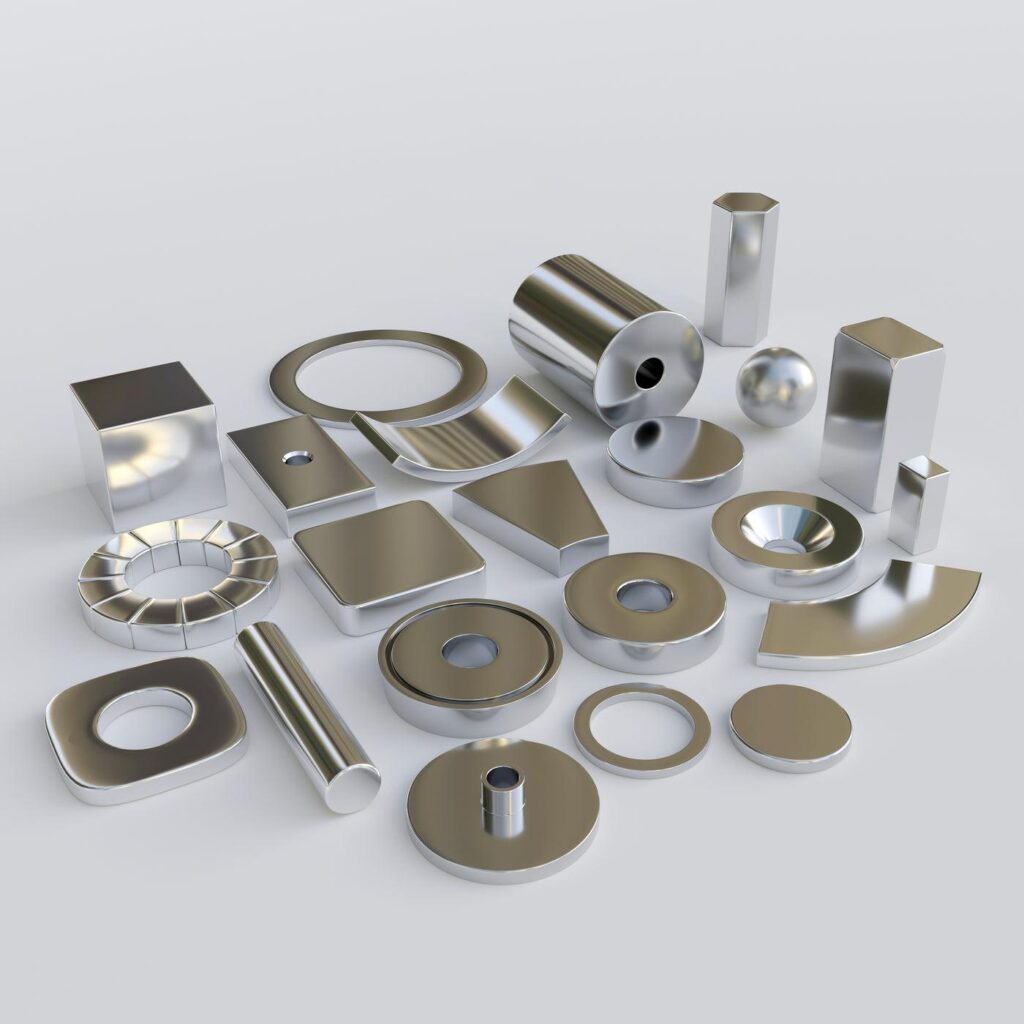
Accurately choosing the right rare earth magnet can be the difference between the success or failure of your project. Having the correct knowledge on these extremely versatile and powerful magnets is critical, but can also be overwhelming, so we’ve created this guide to help you navigate the diverse variety of rare earth magnet options.
Rare earth magnets have countless applications, from school projects and experiments to manufacturing, automation, and quality control. Their versatility knows no bounds. Understanding the unique properties and functions of different rare earth magnets is key to using them effectively.
Types of Magnets
There are many different factors to consider when choosing a rare earth magnet. Some factors are strength, shape, temperature resistance, size and coating.
Permanent Magnets:
Permanent magnets maintain a lasting and reliable hold due to the magnetic field being generated within the internal structure of the magnetic material itself. They will typically retain their magnetic strength unless demagnetised through a certain type of electric current or in extremely elevated temperatures.
Neodymium Magnets:
Rare earth neodymium magnets are exceptionally strong magnets that come in a variety of shapes and sizes, from tiny block magnets to larger rings and cylinders. Due to their strong magnetic force and compact size, they can be a great solution for a project which requires magnets in small and compact proportions. Neodymium magnets are frequently used in many industrial applications, including electronics, electric motors, and magnetic fasteners.
Ferrite Magnets:
Ferrite magnets are also commonly known as ceramic magnets. They are often considered as a more cost-effective magnetic solution in comparison to neodymium magnets This type of magnet, although sufficient in many applications, is not as strong as neodymium rare earth magnets. Ferrite magnets still offer excellent electrical insulation abilities and are superb in environments that are corrosive, damp or high in humidity. Ferrite magnets are most commonly used for magnetic clamping, holding, magnetic healing therapy, and in electrical audio equipment such as loudspeakers.
Alnico Magnets:
Alnico magnets are made from aluminium, nickel, and cobalt. They are known for withstanding elevated temperatures and are extremely resistant to corrosion. These Alnico magnets are significantly weaker than Neodymium magnets but are stronger and more temperature stable than Ferrite magnets. Due to these factors, they can also be more expensive than other magnetic materials. They are also quite fragile. They are available in a number of shapes and sizes and are often used in industrial applications, sensors, and for electric pickups in musical instruments.
Samarium Magnets:
Samarium magnets have the highest resistance to demagnetisation and excellent temperature stability. They are used in many precision control systems in aircraft, marine and spacecraft due to their great temperature stability. They are also a preferred magnet choice for industrial designers, manufacturers and engineers.
Electromagnets:
Electromagnets are magnets that gain their magnetic field by applying an electric current to a copper coil winding around a soft iron core material. The versatile magnets can be turned on and off with a switch that interrupts the power and charging current. Examples of electromagnet applications include:
- Magnetic Lifting Devices: These are used in industries to lift heavy metal objects.
- Temporary Magnets: These materials act like magnets when in a magnetic field but lose their magnetism when the field is removed.
Factors to Consider
When you are selecting a rare earth magnet for your project, you need to consider the strength, size, shape, temperature resistance, corrosion resistance and cost/budget.
Strength:
You will need to determine the required magnetic pull force for your application. Neodymium magnets are the strongest, followed by Alnico and Ferrite. The strength of rare earth magnets is measured by the magnetic pull force or its magnetic flux density (Gauss).
Size and Shape:
Rare earth magnets can come in a large variety of shapes and sizes, so it shouldn’t be difficult to find a magnet to fit your application. The most common shapes include discs, blocks, rings, and cylinders.
Temperature Resistance:
Not all magnets are suitable for high temperature environments. Alnico, Ferrite and Samarium Cobalt magnets can withstand higher temperatures whilst Neodymium magnets can potentially lose their magnetism at temperatures above 80°C.
Corrosion Resistance:
Projects that involve exposure to moisture or chemicals will need to consider magnets with protective coatings or those made from corrosion resistant materials. Ferrite magnets are very popular due to their superb performance in environments that are damp or wet.
Budget:
Understanding your budget within your project may influence your choice of rare earth magnet as well. Ferrite magnets are the least expensive, while Neodymium magnets are more costly.
Conclusion
When picking the right rare earth magnet for your project, you will want to consider factors like strength, size, temperature resistance and cost. No matter what your project may entail, the knowledge gained from this guide can make all the difference when picking the right magnet for you.